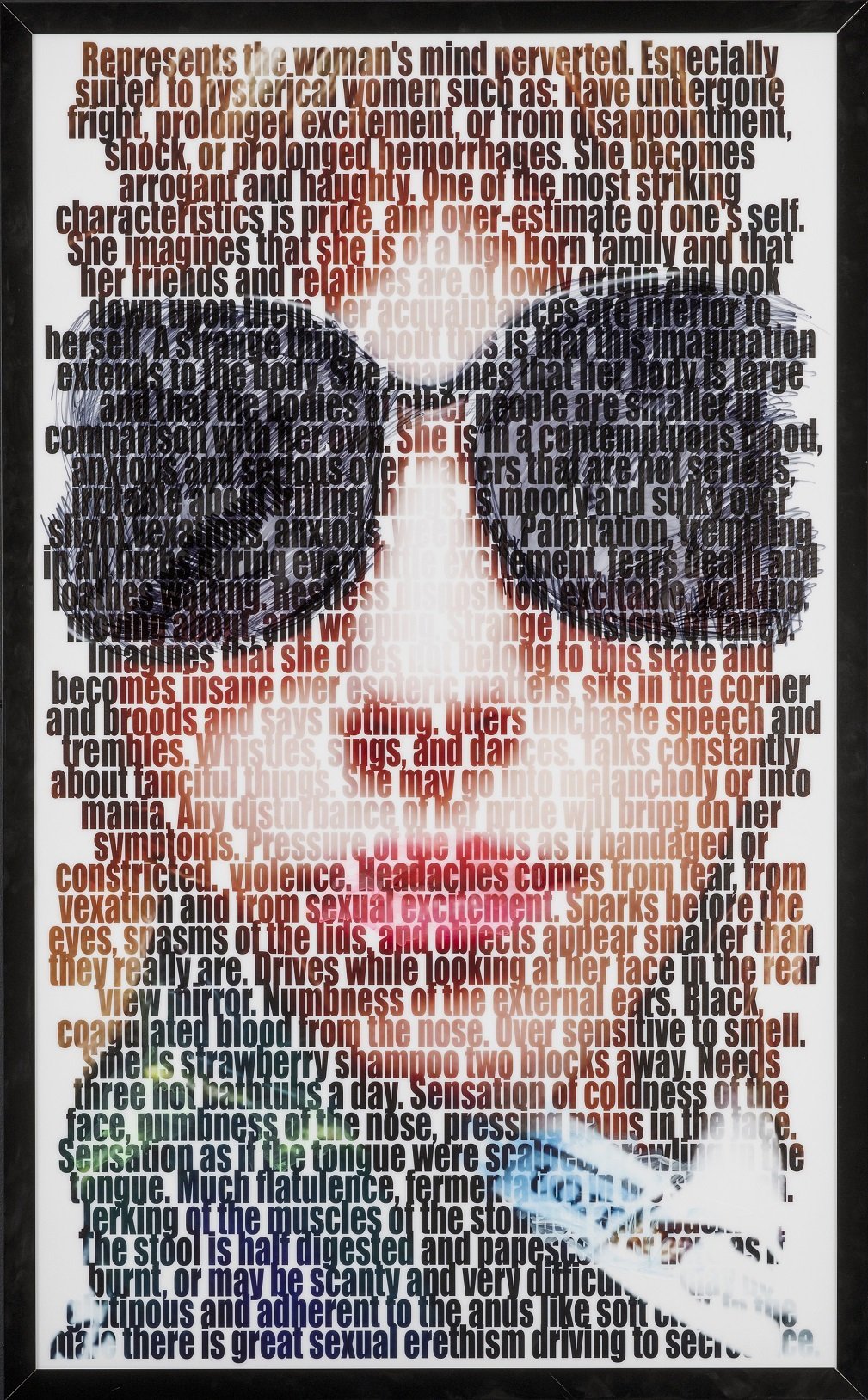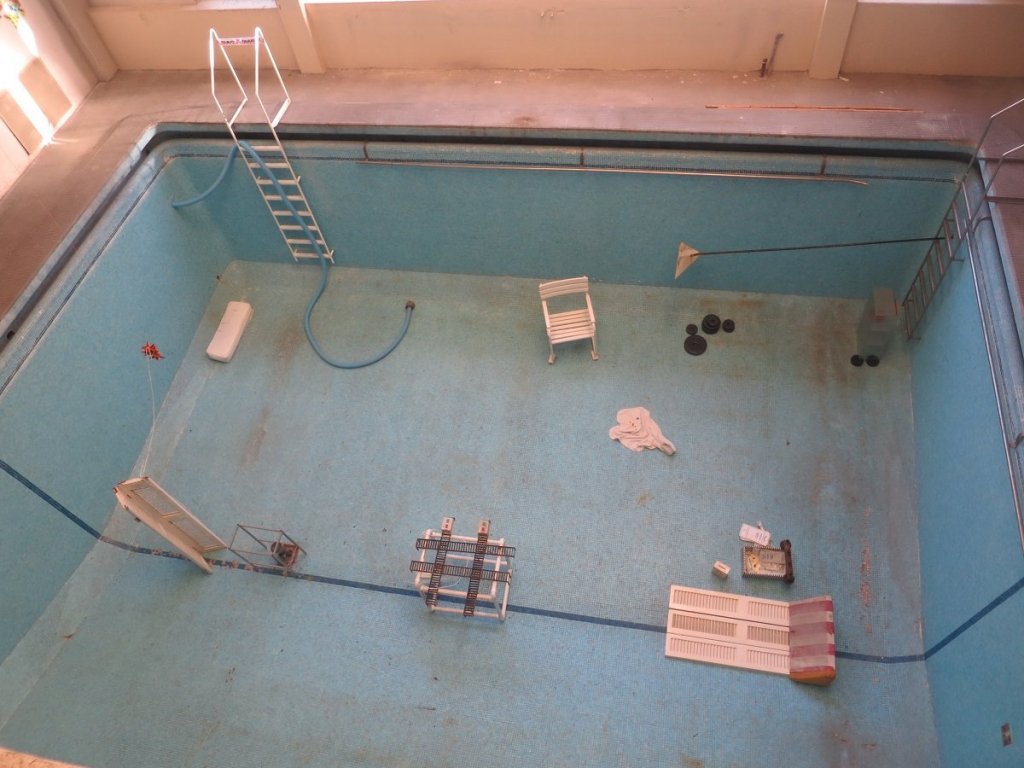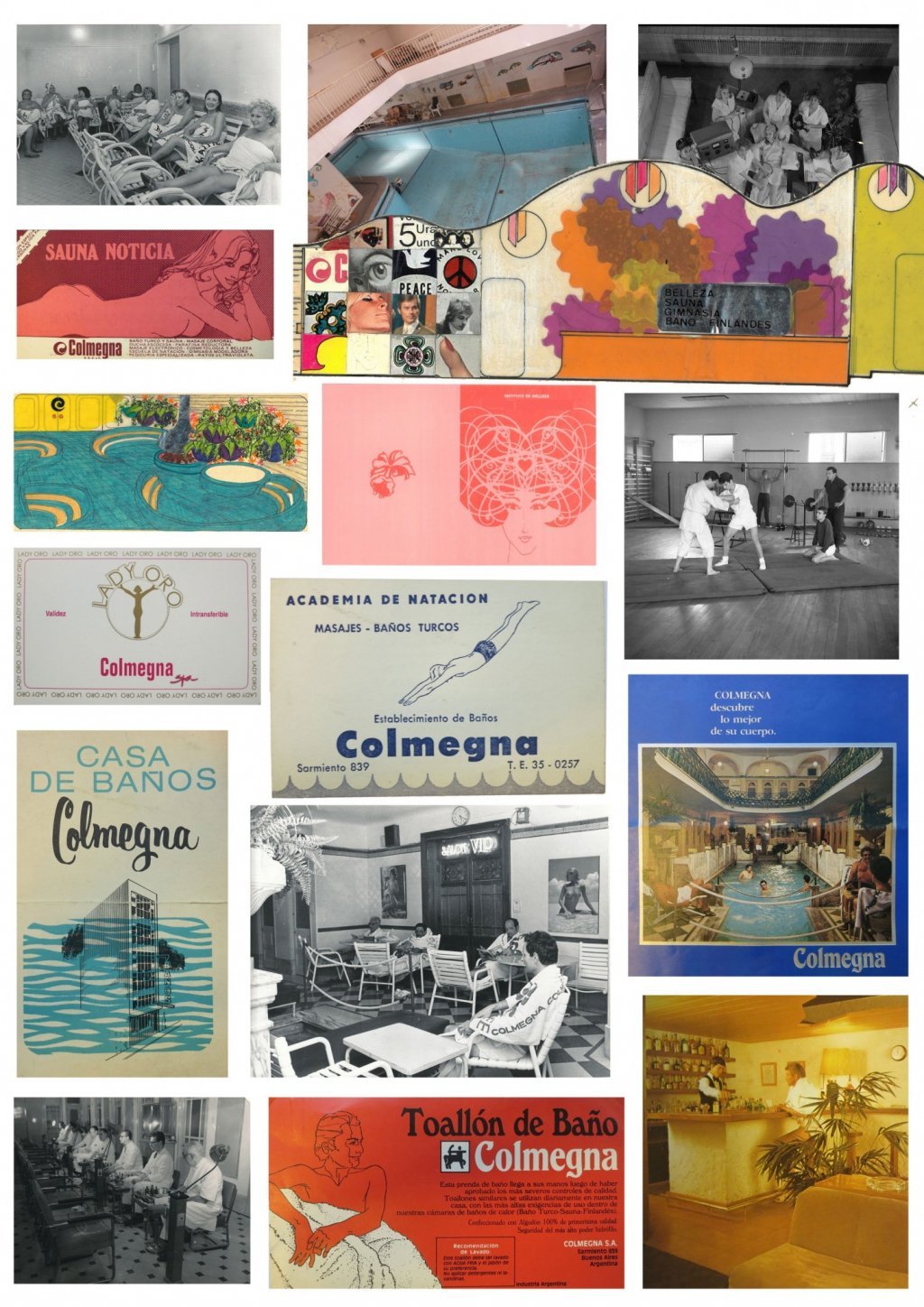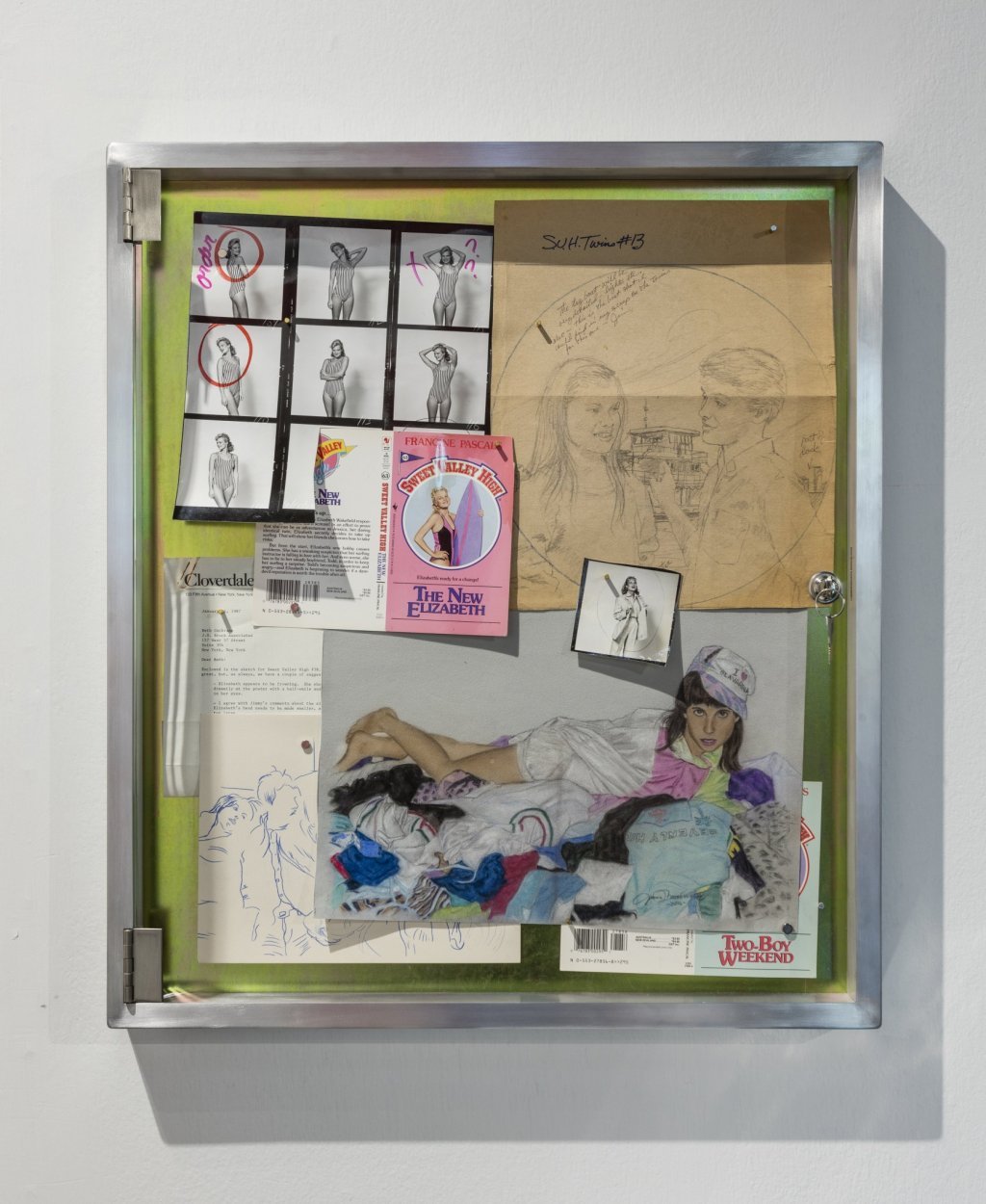From Victoria Colmegna to Victoria Colmegna
A short story of how Victoria Colmegna’s lightness, shyness, esotericism and nostalgia remind us that the longest journey is the one within ourselves.
Questioned about her years of study at Staedelschule, Victoria Colmegna confesses she always wanted to make a work about the McClintock effect, more known as menstrual synchrony. A process that occurs when women who begin living in close proximity experience:
Once this was accomplished among the school’s room mates, the pinnacle of this bioart conceptual piece would be a Fertile Day party where a girl would be pregnant with random sperm. Later, Christo, would be born, the baby of the school. Christo would live inside the institution in a loft done in the Günter Bock style. Of course, this was the kind of dreamy fantasy art, provided by the flirtatious atmosphere that could never be realized beyond a hallway talk; no one took me seriously, perhaps because Germany already had a dark history not too far away in human biology experiments; my ideas can be absent-minded and produce an ambiguous sense of horror and desire, perhaps because they come out of a kind of bag of taboos that in my mind they mix and ferment and I express almost irrationally without thinking that they could offend someone.
Synchronicity and parallelism start to be part of Victoria’s lifestyle, who begins travelling psychotically between Buenos Aires, where she was born and raised, and the capital of Hesse, where these days the European Central Bank is deciding the fate of the Union. On one side of the ocean, there is the place of auto-didactic art, nostalgia, family, a shaky economy—out of experience, changing currency in Buenos Aires is still an adventure. On the other side of the ocean, there is the German certainties, paranoia, and a network which are maybe traumatising words in this story.
When Victoria Colmegna arrives in Frankfurt she doesn’t know much about the art world. She is more concerned with the pedagogical aspect of the school than the purely artistic one — only later will we understand why. The art education in Argentina is that of the old-fashioned Bellas Artes taught at the academy or self taught artist making study groups and Germany feels like a paranoid fairy tale in comparison. She soon realises there is a fingered art system in Frankfurt, but she continues to go back and forth from her country, not wanting to surrender to the “authorities.”
In her case, nostalgia helps resilience, and it kicks in as soon as she decides to study abroad at the age of 24, after already having called herself an artist since the age of 16. Her spleen is for the past of Buenos Aires after the fall of the dictatorship, for those 90s clubs created and decorated by artist friend Sergio de Loof, (the naughtiest) of the Argentinian nights of the end of the millennium.

Lightness
Victoria Colmegna’s exhibition at Schwarzescafe/LUMA Westbau — a sort of anticipatory retrospective (link) — showed how the main characteristic of her work is lightness. Not only in the sense given to the term by Italo Calvino, whose book Six Memos for the Next Millennium could have been sitting on the artist’s desk for a while. There is also the purely physical lightness of her fabrics, designs, manuscripts, brooches, performances, and empty pools.
Light boxes seem to be an exception to this principle, but lightness also implies lack of absolute truths, no rules to be respected, no everlasting things. Moreover, Victoria Colmegna’s light boxes are made of words, which are homeopathic principles. In this case the part applies to the whole.
Her objects stand for a narrative whose elements are variable and defined at once. They are props before being artworks, nostalgic memories of the scene they were part of. Basic lightness makes up for the complexity of life.

Shyness
One might see Victoria Colmegna as the extrovert artist. She uses her body extensively in her objects, or on her Instagram account. However, there is something behind this facade of uninhibitedness, exposed by the artist through the involvement of friends and acquaintances in the works. Their task is to say what the artist is unable or unwilling to talk about, that is, what stands behind the facade.
The three members of the band Triple X played together live for the first time at her Zurich exhibition at Luma. They were all ex-boyfriends of hers, “reunited” for the occasion in Switzerland, hailing straight from Argentina with the kind support of the venue. Their vinyl record will be released soon, says the manager of the band Victoria Colmegna, ironically comparing herself to the pop star agent Phil Spector.
Esoteric
When we ask the artist if she is religious, the answer is a lapidary: “yes, I am.” In what sense though. Since she was a child, Victoria Colmegna has studied lots of astrology, homeopathy, psychoanalysis, new age. “I often go to doctors” she says with no posing “as I like listening to people who talk about me.” It sounds like a reverse confession.
Religions, Catholicism above all, have a “coolness” problem. Yet the need for spirituality does not diminish with the ageing of the churches. We believe that the opposite is true. Humanism, and the language supporting it, requires going beyond your comfort zone at times. The concept of adventure mentioned above comes back, and Victoria Colmegna’s idea of adventure includes curiosity, risk, and fun.

Interlude
From the boat: Champagne, raw ham, diet coke, gruyere! Black or white bread? Black. Okay! Pinot Noir wine! Etc… A few minutes later I have magically in my bed a silver tray with all my whims and a hand written menu listing them in soft black pencil. Also as an extra present: a suspicious silk nightgown. Mom, close the door! This is the last order I give to my slave for the moment. She obeys by lowering her dark blue eyes and with submissive happiness of reliving her role in the symbiosis that united her to my father, until his death. I’m lying (In the bedroom that my father used to lock himself in during his crises, perfectly furnished for that; the walls fully cushioned and upholstered with soft rhinoceros suede) watching a family VHS of 1989 on a giant Samsung TV: my father gave me little pecks in the mouth repeatedly like a game when I was two years old… Surely after taking cocaine hidden in the bathroom he kissed me on the mouth…
Anyway I have no memory of that, probably because that part of my brain is occupied by the life and adventures of my father…
I’m not afraid of getting fat; my Joie de Vivre guides my instincts. Did you know that Paul Verhoeven had the idea of taking the panties off in that scene with Sharon Stone even if it was not written in the script…? I have the most interesting nose, the best mouth, Cleopatra’s eyes, I have one of the best asses in the world that protects me from everything, I am Perfect, I am, perfect, my name is Victoria Colmegna, I am the best artist in the world.
From: “Espá, an autobiography” by Victoria Colmegna, to be released by Editorial Mansalva. This writing is also part of Abandono Europa, a colouring book by the artist presented on Soft Eyes, online platform by Schiefe Zaehne gallery, link.
Control
“For me astrology is a system, like philosophy. They are ways of looking at things and people. I have always searched for the relationship between elements, driven by my need to classify what is around me. This is why I am interested in the ability to describe the personality of an individual down to the smallest detail, even in relation to their body.”
Fortunately, Victoria Colmegna’s drive for classification has not yet taken a precise shape in her works. However, the logic of the gatherer remains. For example, the pool used as a stage for the Mega Porno project (2016) is a container. It is the original pool from the Spa of the Colmegna’s family founded in 1890, a piece of history of Buenos Aires through which many personalities have passed, including Borges and Duchamp. The facility was sold last year, but the artist’s plan to buy it back is real and was presented at the booth of Park View at Liste in 2019 (details of the operation here).

Nostalgia
Victoria Colmegna’s work includes other containers. For example, the school vitrines where she installed the drawings commissioned to James L. Mathewuse, illustrator of the Sweet Valley series of novels to celebrate her diploma at the Staedelschule. They were part of the exhibition Broken Ego at Park View in Los Angeles in 2017.
Children’s pullovers inspired by the paintings of Francis Picabia as well as the windows displayed at the Schwarzescafe / LUMA Westbau, which contained memorabilia of various kinds and which so much remind of the Museum of Innocence by Orhan Pamuk, can be seen as containers too. [here our interview with Orhan Pamuk about his seminal book. Ed]
“I think there is a compulsive aspect in my work that reflects my personality. It boils down to not wanting to lose anything.” However, we do lose certain things. This is when compulsiveness turns into nostalgia. A Chinese proverb says: “let the old go if you want the new to come.” Very few Zen schools are seen in Buenos Aires though.

July 10, 2023
